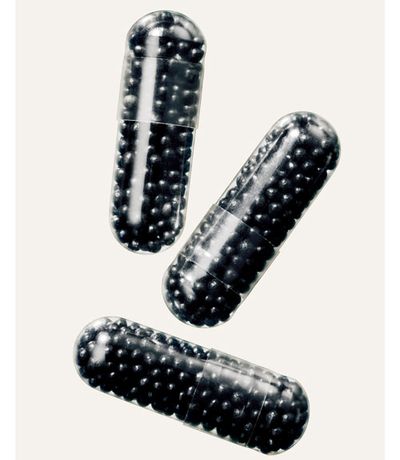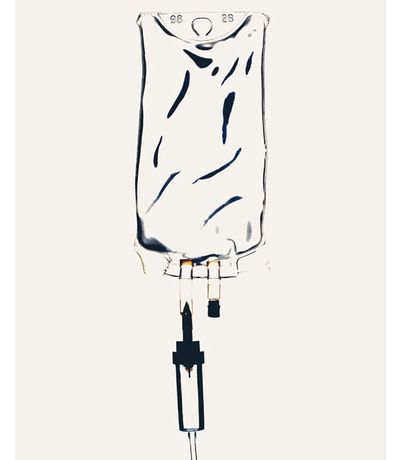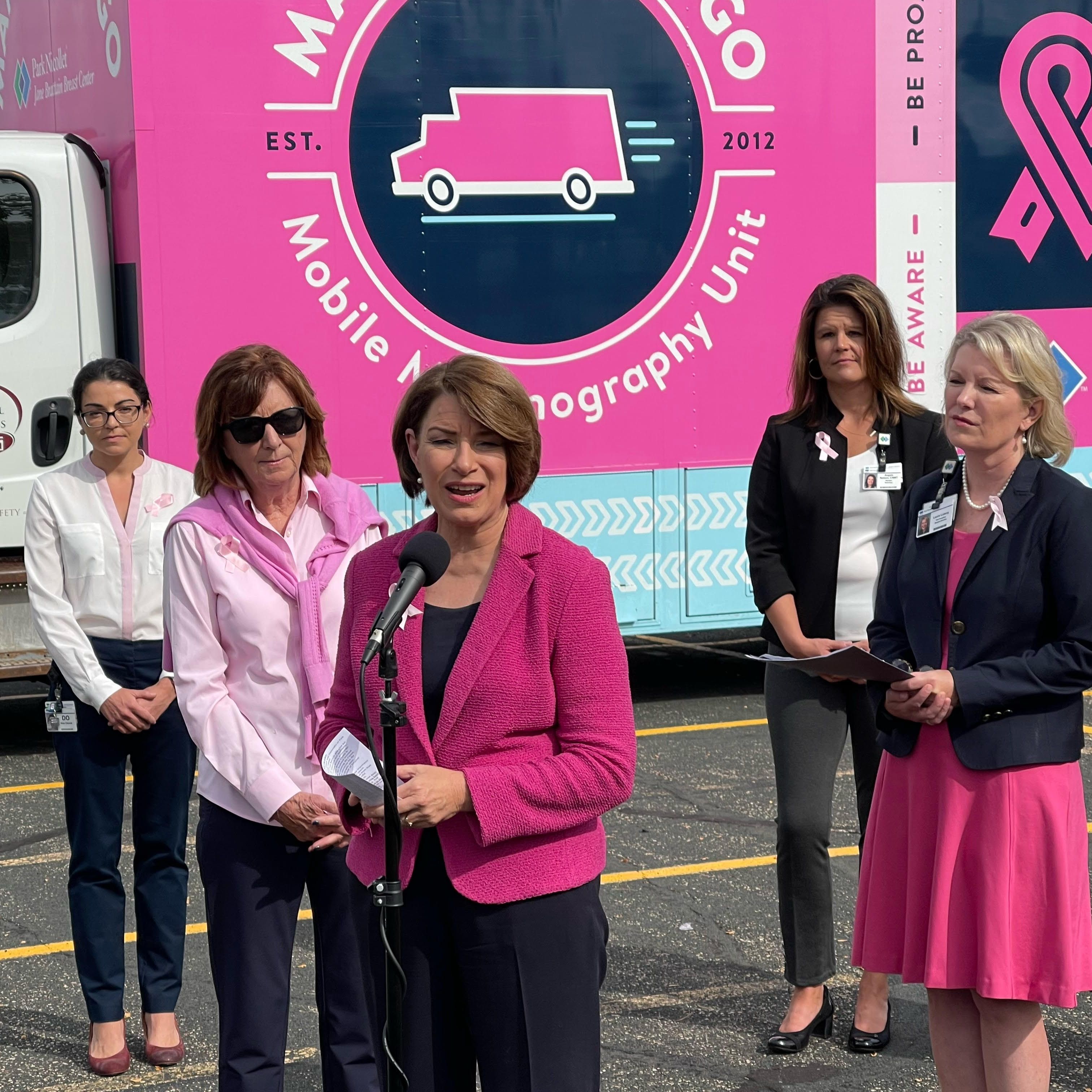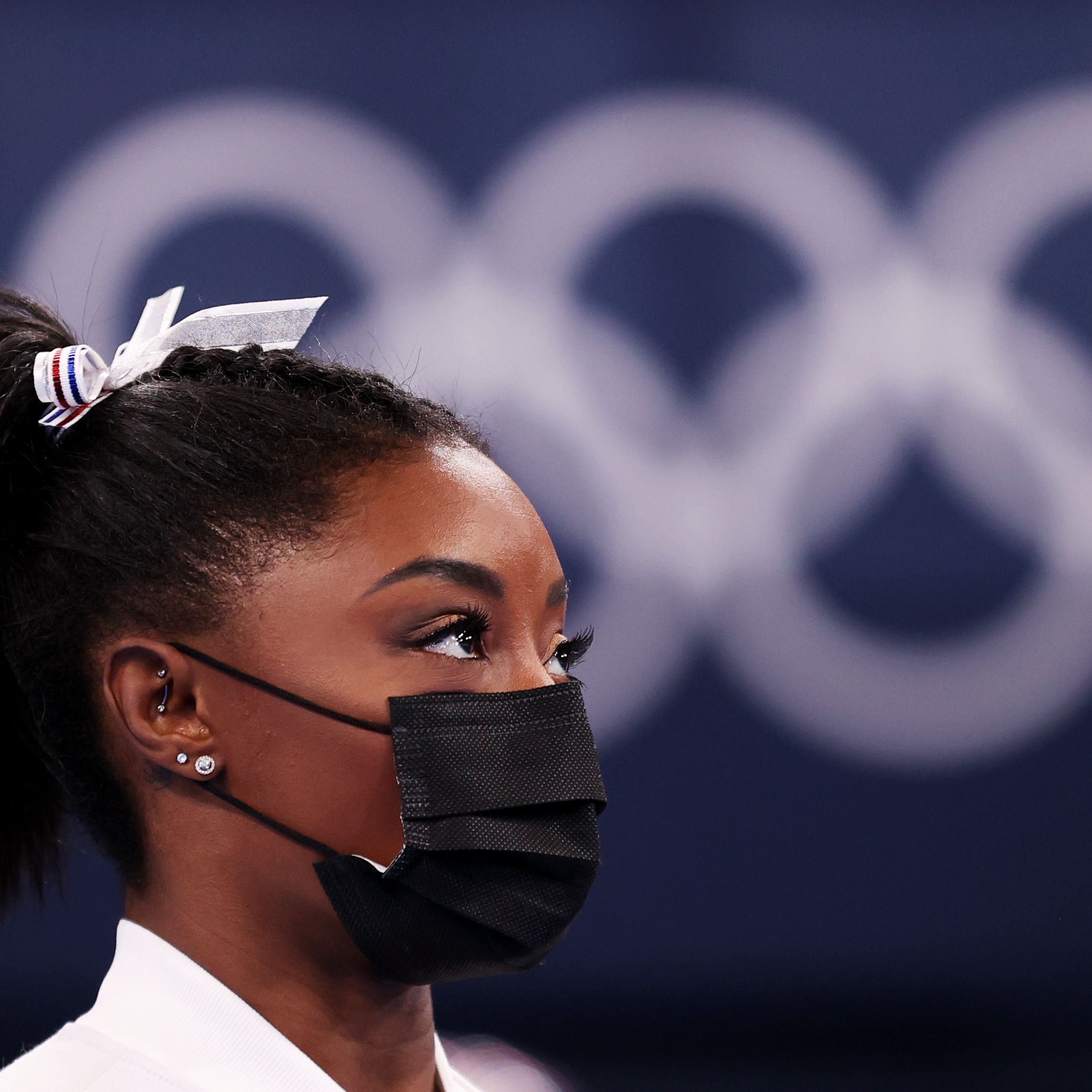The Girl's Guide to Preventing, Avoiding, Treating, and Even Beating Cancer
In 2011, an estimated 43,570 American women between the ages of 20 and 39 will be diagnosed with cancer. The real shocker: Five cancers account for 31,510 of themthat's 72 percent. Here, how to prevent the most common cancers in young women
Cancer: The word alone can paralyze us. Instead of protecting ourselves, we resort to magical thinking—it won't happen to me. That's a mistake. Rates of the top five cancers in women 20 to 39—in order, they are breast, thyroid, melanoma, cervical, and colorectal—are rising. The good news: There's a lot you can do to prevent them. We talked to the country's top doctors and mined the latest research for Marie Claire's first-ever cancer crash course. Here, how to tackle your cancer risk with confidence.
BREAST CANCER: The Dreaded Diagnosis
Odds are, you know someone with the disease—the most common young women's cancer. Rates increased 23 percent in women 20 to 24 between 2000 and 2008, and according to Susan G. Komen for the Cure, a breast cancer education and research foundation, it will kill almost 40,000 women of all ages in 2011. Experts believe the cell mutations that cause breast cancer are triggered by everything from X-rays to hormonal shifts during your period and pregnancy. Treatment includes surgical removal of tumors and lymph nodes, plus chemo, radiation, or hormone therapy. Words you want to hear if you're diagnosed? Ductal carcinoma in situ (DCIS), meaning the cancer hasn't spread; about 20 percent of newly diagnosed tumors are DCIS.
YOUR PERSONAL PREVENTION PLAN
- Notice nipple discharge or hard lumps or painful spots in your breasts? See a doctor.
- Eat right. Researchers at Marshall University in West Virginia found that 2 ounces of walnuts a day reduce risk.
- Pay attention to family history—on your mother's and father's side. If a relative was diagnosed before age 40, your doctor may prescribe annual mammograms from age 30 instead of the American College of Obstetricians and Gynecologists' current recommendation of 40. (The controversial guideline itself was revised this summer.)
- Ask if your family history warrants taking the BRCA 1- and 2-gene mutation test (usually covered by insurance). About 60 percent of women with the mutation will get the disease.
- If a doctor recommends a CAT scan or X-ray, make sure the results will truly affect your treatment–the procedures can increase your risk.
REASON FOR HOPE
Redwood City, California-based health-care company Genomic Health is marketing a test analyzing certain tumors to predict the benefits of chemo and risk of recurrence.
11,310 Young women diagnosed in 2011. –AMERICAN CANCER SOCIETY
3 times: The factor by which your risk can jump in your first pregnancy if you're over 30 with a family history of breast cancer. –DR. SUSAN LOVE, PRESIDENT OF THE DR. SUSAN LOVE RESEARCH FOUNDATION
"Medieval surgeons attacked breast cancer with primitive methods. One describes a mastectomy using fire, acid, and leather bindings." –THE EMPEROR OF ALL MALADIES, SIDDHARTHA MUKHERJEE
Stay In The Know
Get exclusive access to fashion and beauty trends, hot-off-the-press celebrity news, and more.

THYROID CANCER: The Runaway Newcomer
The thyroid gland, perched in front of your windpipe, pumps out hormones governing mood, weight, and brain function. The incidence of thyroid cancer has skyrocketed, recently making it the fastest-growing cancer in young women; since 2000, rates jumped almost 36 percent in women 35 to 39. The increase might be due to higher detection rates and awareness, but X-rays, chemicals, and even hormones like estrogen and progesterone may play a role. Treatment may include having the gland removed and taking radioactive iodine. Thyroid cancer is usually curable, but left unchecked, it can spread to other organs and lymph nodes. "It has the reputation of being easy to treat, but it's still cancer," says Dr. Kenneth Burman, chief of endocrinology at Washington Hospital Center in Washington, D.C.
YOUR PERSONAL PREVENTION PLAN
-If you have trouble swallowing or feel a lump or swelling—tumors range from the size of a pebble to the size of a baseball—under your skin above the bony notch of your breastbone, tell your doctor.
-Get your gland examined annually; your doctor will have you swallow so she can feel it. Some experts even recommend having your gynecologist do the check. Since many young women have thyroid issues, OB/GYNs are used to dealing with enlarged nodules.
-Ask for a thyroid guard—not part of the typical lead vest—when getting X-rays, even at the dentist, to reduce radiation exposure.
-If you have a family history of medullary thyroid cancer, the only heritable type, ask for the RET gene blood test. (It's normally covered by insurance.) If you test positive, you'll need to have the gland removed.
-Pregnant? Get a monthly blood test to track thyroid hormone levels. Pregnancy hormones can stimulate tumor growth.
REASON FOR HOPE
Doctors are excited about I-124, a new radioisotope in clinical trials; its sensitivity in imaging tumors allows them to detect the cancer earlier and to deliver a more precise dose of radiation.
Women 15 to 39 are five times likelier to get thyroid cancer than men of the same age. —BASED ON FIGURES FROM THE NATIONAL CANCER INSTITUTE
Almost 100%: The five-year survival rate for stage-one and -two papillary thyroid cancer, the most common kind. The stage-four rate is 51 percent. —AMERICAN JOINT COMMITTEE ON CANCER
"When doctors say side effects are tolerable ... they don't care if you're bald." —ROSE KUSHNER, BREAST CANCER ADVOCATE

MELANOMA: The Avoidable Killer
Men ages 15 to 39 are about half as likely as women of the same age to get melanoma. You can blame our cosmetic obsession with tanning: UV rays damage the chemical makeup of your skin's DNA, causing genetic mutations in your cells that can result in cancer. Melanoma treatment usually involves surgery. The good news: Diagnosed early, it has a 99 percent survival rate.
YOUR PERSONAL PREVENTION PLAN
-Scan your skin at home each month and jot down descriptions of all your moles. Don't forget to check the hidden areas on the soles of your feet, palms, ears, and even below the belt. Notice a difference in size, shape, color, or symmetry? Tell your dermatologist right away.
-Discuss your unique risk factors (e.g., fair skin, red hair, childhood sun exposure, and family history) to create a custom skincare plan with your dermatologist.
-Wear a shot-glass-size dollop of UVA- and UVB-blocking SPF 30 every day. Clothes don't cut it: The average SPF of a T-shirt is only about 6.
-Avoid tanning beds. They increase the risk of melanoma by 75 percent when used before age 30, according to the International Agency for Research on Cancer.
REASON FOR HOPE
The FDA recently approved two new melanoma drugs: Zelboraf inhibits growth of melanoma cells, and Yervoy prolongs life by about 3.6 months in late-stage melanoma patients compared with a control group.
"When it comes to preventable cancers, melanoma tops the list." —DR. DAVID FISHER, MELANOMA PROGRAM CHIEF AT MASSACHUSETTS GENERAL HOSPITAL
15%: The amount by which skin cancer rates jumped in women 35 to 39 between 2000 and 2008. —BASED ON FIGURES FROM THE NATIONAL CANCER INSTITUTE
50%: The proportion by which a first-degree relative with melanoma increases your risk of developing it. —SKIN CANCER FOUNDATION

CERVICAL CANCER: An STD in Disguise
Cervical cancer is caused by the human papillomavirus (HPV), the virus that causes genital warts. "The strategies you use to avoid gonorrhea and syphilis, like barrier contraceptives, help prevent cervical cancer, too," says Dr. Michael L. Berman, director of the gynecologic oncology fellowship program at UC Irvine School of Medicine. While almost every case of cervical cancer is caused by HPV, not all HPV causes cancer—only certain strains. A Pap smear is your best chance of catching the disease, since symptoms, like vaginal bleeding, don't appear until later. (In late October, the American Cancer Society released revised Pap smear guidelines recommending that most women 21 to 65 get the test every three years, as opposed to annually.) The cancer is treated with surgery or a combination of radiation and chemo, and, tackled early, has a 93 percent survival rate, so don't even think about missing a scheduled Pap. That rate drops to 15 percent in the advanced stages.
YOUR PERSONAL PREVENTION PLAN
-Avoid cigarettes. The by-products of the smoke enter cervical mucus through your blood and kill antibodies, weakening your immune system and increasing the risk of lesions.
-If you and your partner are under 27 and haven't gotten the Gardasil vaccine, get it now—it's covered by most insurance plans and protects women against 75 percent of cervical cancers, and men against genital warts. Older than 27? Skip it. You'd have to pay the $360 cost yourself, and it might not be effective. Sexually active women at this age have likely already been exposed to HPV.
-Use condoms. They decrease your risk of contracting HPV (although it can still be present on skin around the genitals).
REASON FOR HOPE
Transgene, a French biopharmaceutical company, is studying vaccinations that could eliminate a wider range of HPV infections; the Gardasil vaccine stops only the four strains that cause most cervical cancers and genital warts. The new vaccine is expected to hit the market by 2018.
60%: The proportion of women with cervical cancer who are under 50. —AMERICAN CANCER SOCIETY
An analysis of U.S. oral cancer data showed that oral HPV infections, linked to oral sex, are a risk factor for throat and mouth cancers. —AMERICAN DENTAL ASSOCIATION
"A family history of cervical cancer doesn't put you at increased risk; it's not an inherited disease." —DR. JOHN P. CURTIN, PRESIDENT OF THE SOCIETY OF GYNECOLOGIC ONCOLOGY
"Cancer is often described as the defining plague of our generation." —THE EMPEROR OF ALL MALADIES

COLORECTAL CANCER: The "Men's" Cancer You Could Get
Despite its reputation as a male disease, colorectal cancer rates were up 20 percent in women 30 to 34, compared with 5 percent in men, between 2000 and 2008. "Because young women usually don't get colonoscopies, their colorectal cancers often present at an advanced stage when the prognosis is worse," says Dr. Michael A. Choti, Jacob C. Handelsman professor of surgery and vice chair of the Johns Hopkins Department of Surgery. Gastrointestinal conditions like inflammatory bowel disease increase your risk by causing inflammation, which can lead to polyps, small clumps of irregular cells in the colon. If polyps are removed right away, the cancer may never form. Early interventions are 99 percent successful.
YOUR PERSONAL PREVENTION PLAN
-An annual stool sample can lead to early detection. Ask your gynecologist for one, and get a rectal exam, too. She'll use her finger to check for polyps.
-See a doctor if your bowel movements change or you have constipation, diarrhea, or bleeding from the rectum lasting for longer than a few days.
-Get a colonoscopy at age 50 unless you have a family history. If so, go at 40, or when you're 10 years younger than your relative was at the age of diagnosis—whichever comes first.
REASON FOR HOPE
Johns Hopkins researchers are developing a DNA-based stool test that will detect cancerous cells shed from the colon.
18 grams: The daily amount of fiber that a 2010 study found would lower the risk of colorectal cancer. So load up on apples (skin on), lentils, kale, and wheat bran, and avoid red meat and fatty foods, which have been linked to a higher risk.
Cancer therapies have made strides: In 2011 alone, the FDA approved seven new oncological drugs.About 65 percent of early-stage breast cancer chemotherapy patients suffer hair loss.Intravenous chemotherapy accounts for about 80 percent of chemo treatments.
—Additional reporting by Melissa Goldberg
-
 Every Fashion and Beauty Find You Need For 75-Degree Days
Every Fashion and Beauty Find You Need For 75-Degree DaysConsider this your warm-weather checklist.
By Kaitlin Clapinski
-
 One of Princess Diana's Most Iconic Dresses Is Going Up for Auction—And Its Expected Price Will Shock You
One of Princess Diana's Most Iconic Dresses Is Going Up for Auction—And Its Expected Price Will Shock YouJulien's Auctions tells 'Marie Claire' that one famous dress could potentially break records.
By Kristin Contino
-
 The Sporty Aesthetic Is Defining Spring 2025—16 Limited-Edition Pieces to Shop
The Sporty Aesthetic Is Defining Spring 2025—16 Limited-Edition Pieces to ShopIncluding your new favorite sneakers.
By Emma Walsh
-
 Senator Klobuchar: "Early Detection Saves Lives. It Saved Mine"
Senator Klobuchar: "Early Detection Saves Lives. It Saved Mine"Senator and breast cancer survivor Amy Klobuchar is encouraging women not to put off preventative care any longer.
By Senator Amy Klobuchar
-
 I'm an Egg Donor. Why Was It So Difficult for Me to Tell People That?
I'm an Egg Donor. Why Was It So Difficult for Me to Tell People That?Much like abortion, surrogacy, and IVF, becoming an egg donor was a reproductive choice that felt unfit for society’s standards of womanhood.
By Lauryn Chamberlain
-
 The 20 Best Probiotics to Keep Your Gut in Check
The 20 Best Probiotics to Keep Your Gut in CheckGut health = wealth.
By Julia Marzovilla
-
 Simone Biles Is Out of the Team Final at the Tokyo Olympics
Simone Biles Is Out of the Team Final at the Tokyo OlympicsShe withdrew from the event due to a medical issue, according to USA Gymnastics.
By Rachel Epstein
-
 The Truth About Thigh Gaps
The Truth About Thigh GapsWe're going to need you to stop right there.
By Kenny Thapoung
-
 The High Price of Living With Chronic Pain
The High Price of Living With Chronic PainThree women open up about how their conditions impact their bodies—and their wallets.
By Alice Oglethorpe
-
 I Used to Imagine Murdering the Men I Dated
I Used to Imagine Murdering the Men I DatedFalling in love helped me finally figure out why.
By Jessica Amento
-
 60 Workout Apps for Women Who Want Results (Without a Gym Membership)
60 Workout Apps for Women Who Want Results (Without a Gym Membership)Buying Guide Easy fitness plans you can follow without fear of judgment.
By Bianca Rodriguez